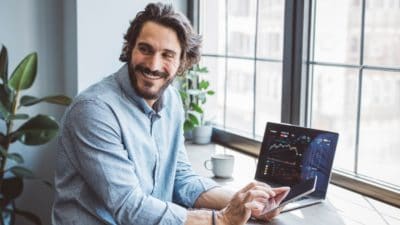At long last, it’s happened. NASA’s Space Launch System (SLS) is … in space.
For more than a decade, NASA contractors including Boeing (NYSE:BA), Lockheed Martin (NYSE:LMT), Aerojet Rocketdyne (NYSE:AJRD), and Northrop Grumman (NYSE:NOC) have worked to make NASA’s vision of an interplanetary megarocket a reality. They’ve been working on SLS so long, in fact, that one of these companies had time to change its name twice before the work was done. (Northrop absorbed SLS contractor Orbital ATK back in 2017, not long after Orbital ATK itself merged with Alliant Techsystems.)
Plagued by technical glitches and uncooperative weather, it eventually took SLS three tries, and three months of delays, to launch itself into orbit this year. But it all worked out in the end.
3, 2, 1 — blast off!
In the dead of night on a Wednesday last month, the 322-foot-tall white-and-orange giant space rocket lifted off from Pad 39B at the Kennedy Space Center in Florida to begin the Artemis 1 mission that is the opening salvo in NASA’s return to the moon.
Over three weeks, the Orion space capsule that launched atop SLS will travel a looping course out 40,000 miles past the moon, before returning to splash down off the California coast on Dec. 11. No astronauts are aboard the spaceship — but that’s kind of the point. Artemis 1’s mission has two primary goals: first, to prove Orion safe for astronauts to travel on. (Orion is carrying multiple high-tech, human-sized test dummies for this purpose). And second, to prove that Orion’s heat shields are robust enough to survive re-entry into Earth’s atmosphere after completing future moon missions.
Only once these things have been proven to NASA’s satisfaction will the space agency allow astronauts to fly on future Artemis missions and return to the moon.
Small steps (for scientists) and giant leaps (for investors)
And let’s emphasize that even a successful Artemis project will only “return” the U.S. to the moon. It’s already been there multiple times — 50 years ago. While 50 years of technological advancement should enable the agency to accomplish more on the next trip, it’s still a relatively small step for NASA toward getting out and exploring the rest of the space system.
For investors, however, Project Artemis creates a giant leap in the revenues that space companies will reap in coming years.
Assuming everything goes as planned with Artemis 1, Artemis 2 is scheduled to fly to the moon and back — with astronauts this time — sometime in May 2024. One year later, Artemis 3 will carry astronauts to the lunar surface itself for the first time in 53 years.
In total, the Artemis project could involve as many as 20 total flights (some plans put the number as high as 30), yielding revenues of anywhere from $20 billion (an extremely optimistic forecast) to $82 billion (a more realistic cost) for lead contractors Northrop Grumman and Boeing to pay for the launches alone.
And even that’s just the beginning.
Lunar habitats to house astronauts on the moon. Moon rovers to move them around when they get there. Nuclear power plants to keep them warm. An orbiting Lunar Gateway space station to provide orbital support to the explorers. Exploring the moon will require building — and paying for — an entire space infrastructure, creating multiple opportunities for space companies to win contracts on the moon.
Historically, NASA has taken the lead on projects like these, outsourcing individual tasks to private contractors but running the operations itself. Over the past decade, however, NASA has been shifting toward more “commercial” models of operation in which it hires private contractors to provide services start to finish — SpaceX and Northrop Grumman conducting supply runs to the International Space Station, for example, and more recently, SpaceX and Boeing transporting astronauts to and from the station.
Savings from these programs have been significant. Indeed, Phantom Space Corporation CEO Jim Cantrell argues that “the private sector has shown that they’re five, 10, 20 times more efficient with a dollar,” driving the cost of individual space launches from as high as $400 million to as little as $50 million.
Given the savings to taxpayers from this approach, and the large price tag anticipated for Project Artemis, which can probably only be afforded if costs come down, it makes sense to assume that opportunities for space contractors — and space investors — will only grow over time.
What began with NASA’s small step back toward the moon could be a giant leap in revenue for space stocks.









